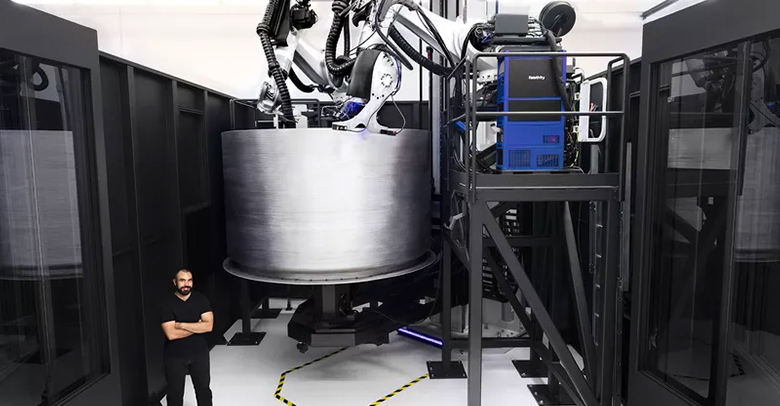Relativity Space, an aeronautics manufacturer that builds almost-entirely 3D printed rockets, is the latest partner in Lockheed Martin’s research program to test advanced in-orbit refueling technology.
The research is funded by an $89.7 million grant from NASA to demonstrate and mature space technologies that will forge a path to sustainable Artemis operations on the moon.

“In addition to demonstrating Lockheed Martin’s in-orbit cryogenic fluid management capabilities, this mission will also highlight the significant advantages 3D printing brings to space launch over traditional manufacturing, including dramatically decreasing time to launch even for specialized payloads,” says Tim Ellis, Relativity Space CEO and co-founder.
Although Relativity Space hasn’t yet launched a rocket into space (its first launch is scheduled for late 2021), its technology, namely 3D printing, has caught the attention and earned the support of major players in aeronautics. The company conducted several successful pressure tests of its 3D printed components earlier this year.
At the new Relativity Space California manufacturing facility called Stargate, custom 3D printers using proprietary technology and materials are building the Terran rocket that will launch the Lockheed Martin payload.
The company’s additive manufacturing approach means intricate engine components can be 3D printed as one part. “Stargate allows us to reduce part count 100x by printing across Terran 1’s structure and engines, significantly reducing touch points and lead times, greatly simplifying the supply chain, and increasing overall system reliability,” the company says. “Our technology allows streamlined launch procurement, rapid iteration, and greater flexibility to generate customized mission specific solutions.”
Relativity Space says it can print a rocket from raw material to flight in 60 days. “For 60 years, aerospace manufacturing has relied on large factories, fixed tooling, complex supply chains, and extensive manual labor to build costly rockets comprised of 100,000+ parts in two years or longer,” the company says. “Incorporating the world’s largest metal 3D printers and AI-driven controls, our Stargate factory continuously optimizes production, resulting in greatly compounded quality and time improvements, lower costs, and product designs previously not possible.”
Lead image source: Relativity Stargate Metal 3D Printer (Source: Relativity Space, Inc)
License: The text of "Lockheed Bets on 3D Printed Rocket from Relativity Space for NASA Mission" by All3DP Pro is licensed under a Creative Commons Attribution 4.0 International License.
